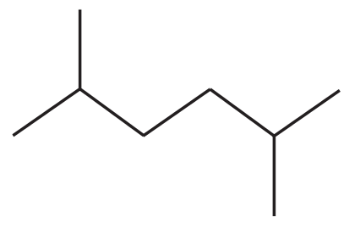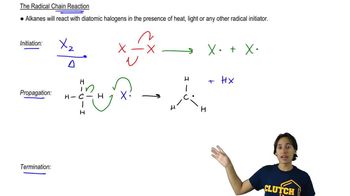How many alkyl halides are obtained from monochlorination of the alkanes in Problem 4 if stereoisomers are included?
h.

 Verified step by step guidance
Verified step by step guidance Verified video answer for a similar problem:
Verified video answer for a similar problem:



 2:05m
2:05mMaster The one reaction that alkanes will actually undergo. with a bite sized video explanation from Johnny
Start learning